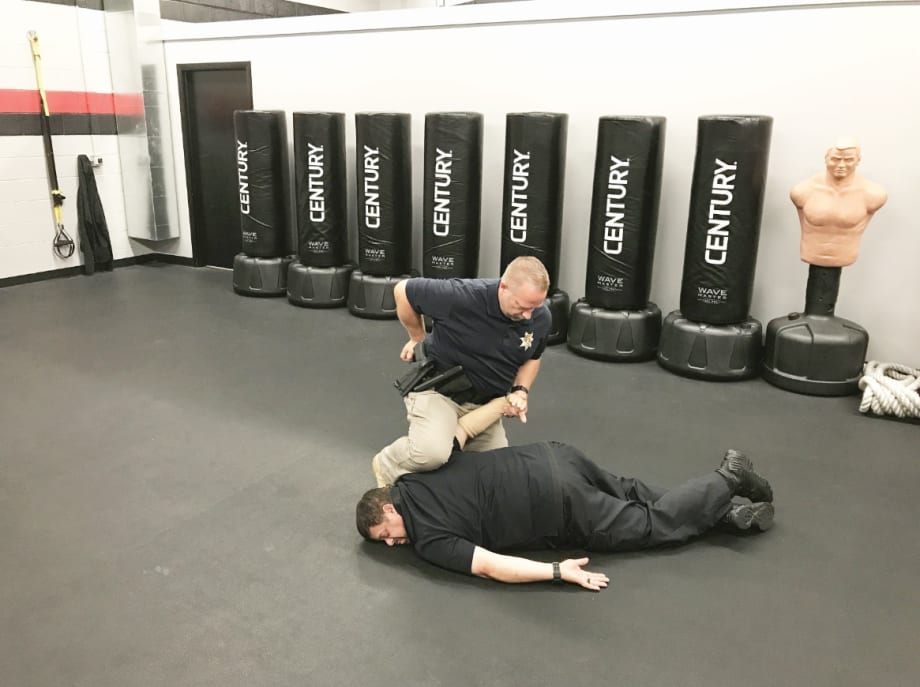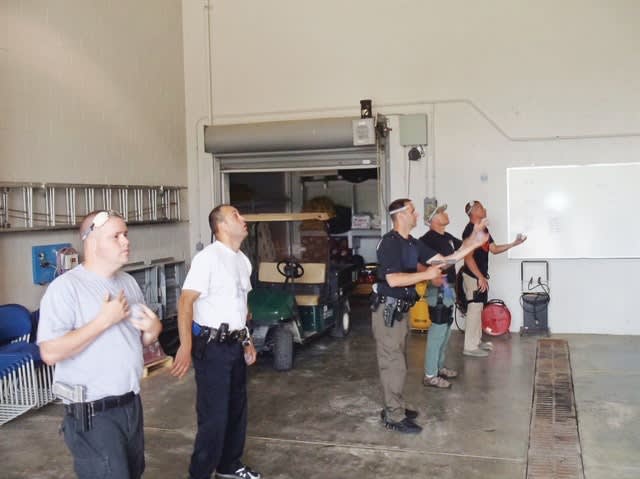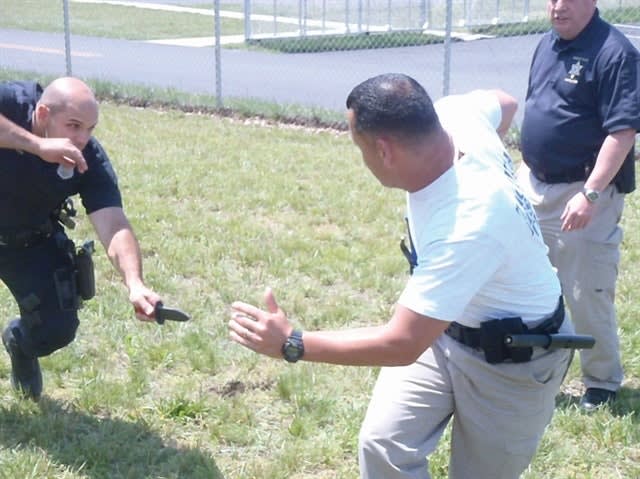When you are verbally engaging your subject for an interview, statement taking, or while gathering information, start 5 feet from the subject. Practice drawing your gear in this situation. Again, you can do this exercise using a chair to stand in for a subject and place the chair in several different environments while in all of your positions like standing, kneeling, sitting, ground, prone, supine, etc.
When conducting this exercise with a partner you can either have them move toward you or you can move toward them to help you gauge at how fast a pace someone may be moving toward you.
When You Make Contact:
When you are operating, as in patting down a subject, receiving their identification, or making an arrest, start 2 feet from the subject. Use a chair again as a subject and place the chair in several different environments while practicing drawing gear from your duty belt in all positions: standing, kneeling, sitting, ground, prone, supine, etc.
With a partner you can either have them move toward you or move toward them to gauge at how fast a pace someone may be moving toward you.
















